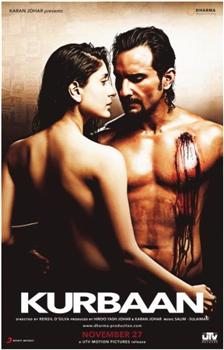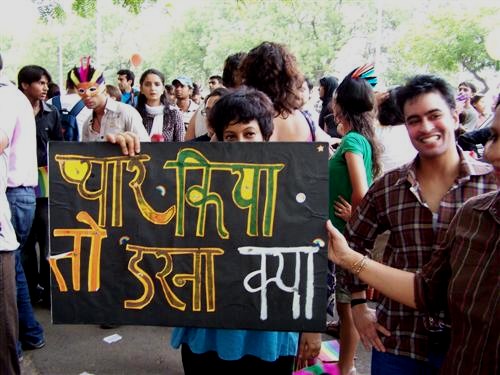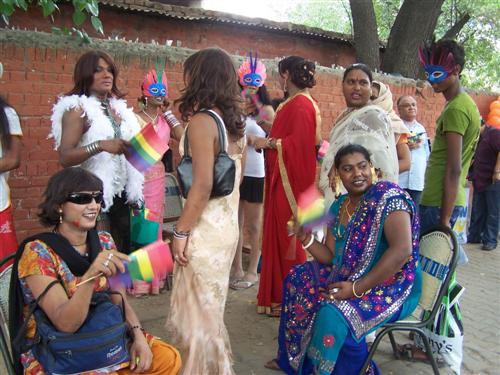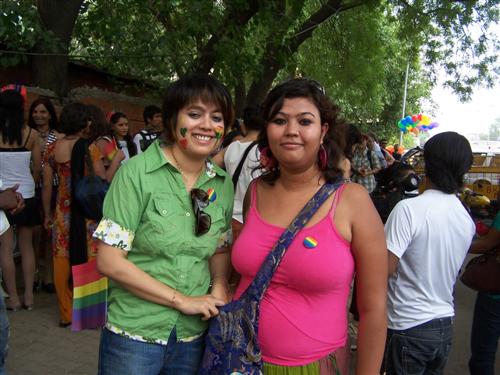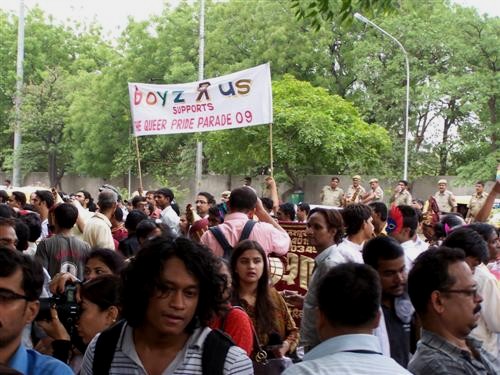Recently I had the opportunity to listen to three writers talk about the conflicts in their countries and how it affects and influences their writing. This seminar was part of a wider event organised by Italian weekly
Internazionale. The three writers were
Suad Amiry from
Palestine,
Romesh Gunesekera from
Sri Lanka and
Abdourahman Waberi from
Djibuti and talking to them was Italian journalist
Maria Nadotti.
It was a fascinating discussion and for a long time I kept on thinking about it. Here are a few excerpts from this seminar.
Maria: Suad Amiry’s family was originally from Palestine, but they had to leave their countries before her birth and she was born in Damascus. However, she went back to live in Ramallah in Gaza some years ago. Palestine is composed of Gaza and Cis-Jordan, not connected to each other.
Gaza is a narrow strip of land along the coast, 6-14 km wide and about 40 km long. In this area live 1.537.000 persons, that means 472 persons per square km.
Cis Jordan is about 6000 square km area, its borders are not defined exactly, with a population of about 2.5 million Palestinians and about half a million Isrealis.
Suad: Talking about Palestine, it is a country that is shrinking all the time. At the beginning of century (Note: I think that she means the beginning of previous century - nineteen hundred), Palestine was four times as it is today.
In Palestine, space and time do not have significance. What I mean by that is that if I go out of the house to go to Jerusalem, which is only 15 km away from Ramallah. In a place like Ferrara, you can say “15 km means 15 minutes”. But in Palestine, those 15 km between Ramallah and Jersualem can take you 15 minutes, can take you 2 hours, could take you a whole day, may be you never reach Jerusalem, may be you never come back.
Thus the notion of the state of Palestine, in a situation of occupation, is different. Palestine is more or less the size of the island of Alba in Italy, but it has 500 check-points. These check points don’t separate Palestine from Isreal, they really separate Palestine from Palestine.
So if you talk of geography and if you look at the map of Palestine, it looks like a swiss cheese. Maria has asked me to talk about geography of Palestine so you see, it is an Arab country and has Arab culture, but we can never get to any Arab country because of the occupation.
The world media is only interested in bombardments and the suicide bombings, Abu Mazen and Yassef Arafat. No one really cares about three and half million persons under occupation. For me occupation means that space around me keeps on changing. I am an architect and I see that change. I became a writer purely by accident. Because of building of settlements, because of occupation, because of building of wall, we live in a changijng place all the time.
May be you have seen “Cinema Paradiso”, where the whole village goes into estrangement because one cinema, one building is gone. In Palestine, we live thousands of “Cinema Paradiso” because when I go out I am not sure what I am going to find.
Maria: Here we are talking of small countries, that are becoming even smaller. For political erosion, as in Palestine. For geographical erosion and migrations as in Sri Lanka and Djibuti.
My question is that migrations make a country smaller and at the same time, in another way, enlarge it. They multiply it. What would I know about those other countries without the voices of the emigrants? Writing about your countries from outside or from inside? What happens when you write about your countries from far away? Not just far away physically but also far away in memories? What do we know about our countries after thirty years of not living there? How does that differ from writing about it, living there in the middle of daily routines?
Suad who lives there, writes her daily happenings, an on going dialogue. While Romesh and Waberi write much more through evocation.
Romesh: This is complicated. People feel that you have to write about what you know or where you come from. There is a kind of pressure on you to write about certain things. Like some American writers feel that they can write only about the good things in America and not about the trash, even if trash is from where great literature comes.
There is an assumption that where you come from, that might affect your writing. One of my Indian writer friends, when he saw my first book, a very slim book, he said that it is because I come from a small island. He doesn’t write very big books but he believes that being from a large country, he has so much to cover and his canvas is going to be very large. May be there is an element of truth here.
How you write about a country when you are far away from it, is not an issue, because I am a writer of fiction. Unlike the writers of happenings, when you write fiction, in your imagination you are actually there. I am interested in the connection between the real world and the fictional world, but anyone who reads fiction and is excited by it, knows that there is an area of frisson between the real and the imaginary world. You are writing about a place and about people, which is true and also not true. That is why people love to go to the places where fiction is placed. Like, if you like James Joyce, people go to Dublin and they walk on the street where Leopold Bloom walked, they stop where he stopped and they know that he never existed and he never walked on that street. It is all in imagination. I think that connection is what is interesting.
Suad: As Maria said, I became a writer thanks to Sharon and my mother in law. I lived my life as an architect and being an architect is a state of mind. As writers also we are in a state of mind. “Murad Murad” is my fourth book, but I really can’t say that I am a writer. I can tell you what I do, how I live in my writing.
My first book “Sharon and my mother in law” came as a result of curfew for 42 days. My mother in law was ninety one year old and she came to live with me during those days. I tell Isrealis that one day I may forgive you for putting us under a curfew for 42 days but I will not forgive you for making my mother in law live with me. With her, those 42 days seemed like 42 years.
There were Isreali soldiers outside our house and I had my mother in law inside the house. So I had double occupation. Those of you who follow the news, you know that Isreali occupation is enough to drive you crazy but having my mother in law made me a writer. So what happened was that every day I would sit at home and write what ever was happening in our home, between my mother in law and I.
I wrote about going shopping when they lift the curfew for two hours and you can go out and buy everything you need, imagine eighty thousand people trying to shop all together. It was a mad house. I wasn’t thinking of writing. I was writing emails to friends, telling them that please do not share these with anybody, because they were so nasty about my mother in law. Little did I realize that people like nastiness, they liked them because of their frankness. It was reporting that was not intended to become a book.
Actually it could be fictional because living in Palestine is so unreal. Sometimes, I ask when is reality? I don’t say what is reality, I say, when is reality? It is true that I am reporitng from everyday experience. People keep on asking me, is that real, is that true? I write for real, what people think may be fiction.
My second book, “No sex in the city” (Note: I am just translating from the Italian title that she quoted, actual original title may be different) was about Ramallah. That book was instigated and triggered by Hamas winning the elction in Palestine. That was so drammatic in my life, being a woman who was active, like I was active in PLO (Palestine Liberation Organisation). I have been involved in it all my life, it is a secular movement. We always felt that we worked for women’s issues and secularism. To be one of the first countries of the world that would elect a religious party was drammatic, it made me loose reality. It made me think about who am I, what country am I living in, what future do I have? I felt that I have spent so many years of life to convey to the world that Palestinians are normal human beings, and then with election of Hamas!
I wanted to say that Palestinians are normal human beings, that Moslems are normal persons and those elections pushed me to write about the life of my women friends. I wanted to call that book “Palestinian Menopause” but the editor was afraid of the “menopause” in the title, and then the title was “No sex in the city” and that was fine because no one is afraid of the word “sex” in Italy.
It is about the life of women friends and about very real stories about how people became Palestinian. It is not about Palestinians. Only when I wrote that book, I realized that my women friends, the menopausal group with whom we go out every day, one is Egyptian, one is Moroccan, one is Armenian, one is American, hardly there is a Palestinian except for me, and I am half Palestinian and half Syrian. What brought us together was because of Palestine, as a cause rather than as a geography.
My last book is again from a harsh reality. The reality of building that wall, that is a concrete wall. But for me that wall is not a physical thing. It is a monster. If you ask Palestinians to tell about three events that marked the history of Palestine, they will say 1948 when 800,000 people were thrown out of historical Palestine that became Isreal and my family happened to be one of them from Jaffa; then they would say the setting up of those 500 check-points inside a small area, that prevents us from moving; and the third would be the wall.
Let me explain how this book “Murad Murad” came about. The wall is such a reality that I always ask – what would have happened if we Palestinians or Arabs around all the Jewish state of Isreal, how would the world treat us? It is beyond me, I don’t know whether it is a reality or fiction, that Isrealis, who everyday talk about need for peace, want to be part of the middle east, built that wall that separates them from their future neighbours.
Murad was like my mother in law in my other book, “Sharon and my mother in law”. My mother in law, who was ninety one year old, for me was a symbol of resistance. For her the curfew didn’t matter, she wanted her milk in the morning at seven o’clock. No matter what happened, she wanted to have lunch at one o’clock. So to me she was a symbol of resitence, of wanting to live a normal life in spite of the curfew imposed by Isrealis. Murad was symbolised same resistance to me.
I contemplated, how would I write about the wall? Then I thought that I want to write about the wall from an animal’s point of view. We human beings are so egocentric. The first things that hurt me about the wall was the one million five hundred thousand olive trees that were uprooted for this wall to be constructed. I was thinking what would a deer or a hare would think of this wall. Then Murad appeared one day in my life. He is a twenty one year old boy, who has been working in Isreal for the last seven years of his life. He woke up one day like the other 200,000 Palestinian workers, who had spent all their lives there and were told by Sharon that “No more illegal Palestinian workers coming to work in Isreal.”
We are all aware of issues of migrations and workers, but it is very difficult for me to think of Palestinian workers being illegal in their homes.
Abdourahman: Coming to the question of reality and fiction, it is very complicated. I often have this discussion with my students and ask them what is reality? If you go to the Piazza Trento and you shoot a video there near a lively place outside a café and then you go ten minutes later and the place is empty, so what is reality? I think that reality is something untrackable, something fluid.
Having written eight-nine books on my small country, I realize that I am not writing just from reality’s point of view or from geopolitical point of view, but I am also writing about something that is depper than reality, something that is country of my imagination that is mixed and overlapping with the country of reality. You have history, geography, mythology, etc. so this geological overlapping is something that you try to pierce or break into pieces by the use of the language or the use of imagination.
My writing has to do with both, with reality and also with mythology and history. That is why I use fables like in this book “In the United States of Africa”. That “In” in the title signals that everything has happened, and the purpose of the book is to say that United States of Africa is a reality. It has been created by imagination. I start by taking it forward from there, that so what would happen? From this point of view, you can create distance and you can also produce criticism, what I call social criticism. You start with imagination and from that imagination, you can create a political action.
You can write like that about Palestine, how it was in 1844 and how it could be in 1984 and thus it can exist in the heads of the readers without polemics or whatever. Why I wrote this book, because I was an African in Europe or an European African, I have been for so long in France that I have been Francised, so what I am asking is who am I and who are we in this world?
I am asking if all Europe wants to emigrate to Africa, what would happen? Then you would see the issue of emigration and work, one of the key issues of today, from a different point of view. That is what I have tried.
Actually I am ready with a new book that is called “Passage of tears” that is looking at Djibuti in recent times. That is looking at two important areas – the Islamic discourse in the public and social space that is often linked to Al Qaeda and Bin Laden, and a new interpretation of Islam for a new political agenda. The country is changing also because of interest of the Persian gulf in Africa. Djibuti had strong exclusive links with France, but it is no longer the case. In Djibuti you have French, because France is an important partner within the global agenda, but you also have the US because it has the biggest military base in Africa in Djibuti. Then you have influence from Afghanistan, Iraq, Yemen and all those places. And in the book it is framing the situation from social and economic point of view. Having said that I am also trying to build some kind of historical connection between Djibuti of today and the France of the fascist Arab days, that situation of nineteen thirties and fourties in France, at that time Djibuti was a colony. This is a way of making the landscape and making new perspectives. It has to do with geropolitical situation and with history.
Romesh: I can add to that because it struck me that even with fiction, the reader is getting news from some where. It tell you about real things even if it is not reality. My last book, The Match, part of it is set in the Philippines in the nineteen seventies when I grew up there. I was a little worried when I did that, wondering if I new enough about it or if I could do it well. When the book was published, I was very interested in reactions from the people in Philippines.
Philippines is a country of young people and so most people and most people who read the book were not there in the nineteen seventies, so it is a new country in a sense. To read about that for them was to read about a different place. The other feed back that I got was that newspapers etc. you don’t have to be Philippino to understand the country, you just have to be there or you just have to imagine it to redefine the way you think about the place.
That made me think of something that Russian writer Nobokov said about fiction, when you read something and you sense the excitement or a sense of fear of the character, what you sense is actually quite often the real sense of writer behind that who has a sense of excitement or fear about the sentences that he or she is dealing it, it comes out of the words themselves.
Comment: It was a fascinating morning listening to the three writers. I felt the three of them also symblised three different ways of bring a writer. For me Abdourahman's way of talking about his work seemed more intellectual, Romesh's way of articulating seemed more emotional, while Suad seemed more rooted in irony.
I liked all three of them, and I also liked the way Maria probed them, but I was struck very much by Suad's way of narrating her daily dilemmas. There is so much rhetoric all around about human rights, democracy and other such ideals and yet listening to her and what happens in Palestine is a cruel reminder of the distance between reality and rhetoric.
After the meeting I talked some more with Romesh. I asked him if the main protagonist in his new book "The Match" is more autobiographical in the sense that it is about a person who has forgotten his roots and then in the middle age, rediscovers them, and that emigrant writers often touch on this theme of rediscovering their roots, sooner or later in their writings. Romesh said that almost all important writers are emigrants, from Shakespear to Dante, which I found very intriguing.




